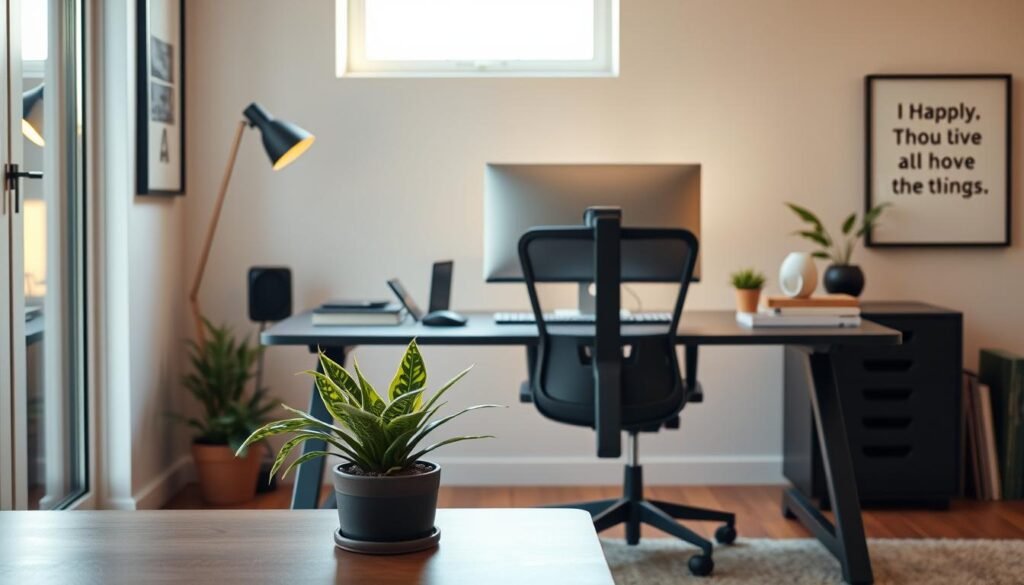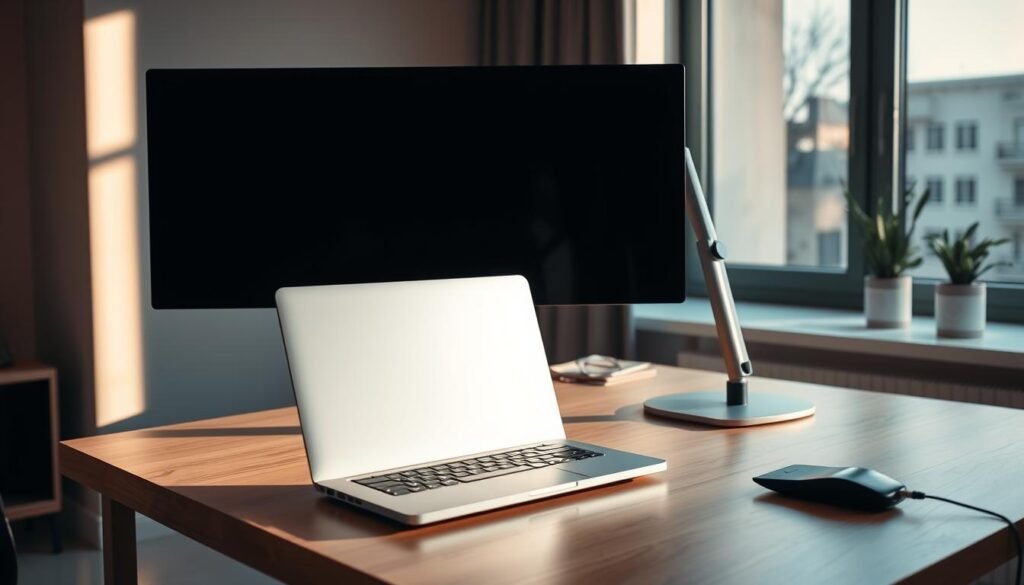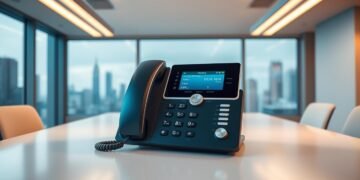Did you know that remote workers are 35-40% more productive than their in-office counterparts? With the shift to remote work becoming a long-term trend, creating an efficient and healthy workspace is more important than ever. By 2025, 20% of professionals are expected to work remotely at least three days a week. But are you making the most of your home office?
A well-designed workspace isn’t just about comfort—it’s about boosting productivity and protecting your health. From ergonomic furniture to tech security, every detail matters. This checklist ensures your environment supports your work and well-being, helping you avoid common pitfalls like eye strain or poor posture.
Employers who support remote work show they care, and 80% of workers value this flexibility. With a 30-second commute and a thoughtfully designed office, you can achieve better work-life balance and efficiency. Let’s dive into the essentials that will transform your workspace into a hub of productivity and health.
Key Takeaways
- Remote workers are 35-40% more productive than in-office employees.
- By 2025, 20% of professionals will work remotely at least three days a week.
- A proper workspace setup can prevent health issues like eye strain and poor posture.
- 80% of workers value employers who support remote work options.
- An efficient home office improves work-life balance and productivity.
Why a Proper Work-from-home Setup Matters

Your productivity and health are closely tied to your work environment. A poorly designed space can lead to discomfort, fatigue, and even long-term health issues. For example, poor lighting increases eye strain by 78%, while ergonomic chairs reduce back pain by 54%.
Investing in the right tools can have a significant financial impact. Work-related musculoskeletal disorders cost the U.S. $20 billion annually. A dual monitor setup, on the other hand, can boost output by 40%, making it a smart investment for efficiency.
Remote work also introduces unique challenges like Zoom fatigue and security risks. Did you know 43% of data breaches originate from remote endpoints? Ensuring a secure and comfortable workspace is essential for both health and peace of mind.
Air quality and lighting also play a role. Poor air circulation can lead to fatigue, while proper lighting reduces eye strain. These factors contribute to what experts call a “productivity tax,” where subpar setups hinder your ability to perform at your best.
By addressing these issues, you can create a work environment that supports your productivity and well-being. Whether it’s ergonomic furniture or better lighting, every detail matters in transforming your space into a hub of efficiency and comfort.
Essential Tools for Your Work-from-home Setup

The right tools can make or break your remote work experience. From your laptop to your internet connection, every piece of equipment plays a vital role in ensuring productivity and comfort. Let’s explore the must-haves for an efficient workspace.
Laptop and Monitor
Your laptop is the heart of your workspace. For multitasking, opt for a device with at least 16GB RAM. Laptops in the $1,200-$2,500 range often offer the best balance of performance and durability.
Pair your laptop with a high-quality monitor. BenQ’s 25-27″ screens with WQHD or 4K resolution are excellent choices. Be mindful of HDMI limitations, as larger monitors may cap resolution at 1920×1200 pixels.
Keyboard and Mouse
Ergonomic keyboard and mouse setups can prevent repetitive strain injuries (RSI). Wireless options offer flexibility, while ergonomic designs prioritize comfort during long hours. Choose peripherals that suit your workflow and posture needs.
Reliable Internet Connection
A stable internet connection is non-negotiable. Aim for speeds of at least 100Mbps to handle video calls and large file transfers seamlessly. For rural areas, Starlink provides a viable solution. Consider backup options like UPS systems to avoid disruptions.
Integrating tools like Ooma Office or Google Workspace ($6/user/month) can further streamline communication and collaboration. With the right office supplies and technology, your workspace will be a hub of efficiency and comfort.
Ergonomic Furniture for Long Hours
Spending long hours at your workspace demands furniture that supports your body and productivity. The right chair and desk can prevent discomfort and enhance your focus. Investing in ergonomic solutions ensures you stay healthy and efficient, even during extended work sessions.
Choosing the Right Chair
Your chair is the foundation of a comfortable workspace. Look for features like adjustable lumbar support and 360° rotation to maintain proper posture. Mesh chairs are a great option, reducing sweat by 40% during long hours.
When comparing chairs, durability matters. A $300 chair may suffice, but a $1,200 model often offers better longevity and support. Warranty durations vary, so choose a brand that stands behind its product.
Adjustable Desks
An adjustable desk can transform your workspace. Sit-stand desks reduce lower back pain by 57% and increase calorie burn by 15%. Look for models with height ranges from 22″ to 48″ for maximum flexibility.
Pair your desk with an anti-fatigue mat for added comfort. Wall-mounted solutions are ideal for smaller spaces, while monitor risers improve screen alignment and reduce neck strain. Height-adjustable desks also support your circadian rhythm, keeping you alert throughout the day.
Ergonomic accessories, ranging from $20 to $100, can further enhance your setup. From keyboard trays to wrist rests, these small investments make a big difference in your comfort and productivity.
Lighting and Its Impact on Productivity
Lighting plays a crucial role in shaping your productivity and well-being. The right setup can reduce eye strain, improve focus, and create a comfortable environment. Whether it’s natural light or artificial solutions, every detail matters.
Natural Light vs. Artificial Light
Natural light is ideal for reducing fatigue and boosting mood. Studies show that exposure to daylight can improve focus by 15%. However, not all spaces have access to ample sunlight.
Artificial lighting, when designed correctly, can mimic the benefits of natural light. Task lighting standards recommend at least 500 lux for optimal visibility. Color temperature also plays a role—3000K creates a warm ambiance, while 5000K enhances alertness.
Desk Lamps and Monitor Light Bars
A high-quality desk lamp can make a significant difference. Look for UL-certified, flicker-free options to prevent headaches. BenQ light bars, for example, reduce blue light by 92%, protecting your eyes during long hours.
Monitor light bars are another excellent addition. They reduce glare and provide even illumination for your screens. Installation is simple, and they integrate seamlessly with your workspace.
Smart lighting solutions can also align with your circadian rhythms, promoting better sleep and alertness. Whether you choose a desk lamp or a monitor light bar, investing in proper lighting is a step toward a healthier, more productive environment.
Organizing Your Workspace
An organized workspace can significantly boost your efficiency and reduce stress. Clutter on your desk can distract you and slow down your workflow. By focusing on storage and cable management, you can create a space that supports productivity and keeps your supplies within reach.
Storage Solutions
Vertical storage is a game-changer for small spaces. Pegboards and floating shelves are popular options, saving an average of 4 square feet. Pegboards are cost-effective, starting at $20, while floating shelves offer a sleek look for around $50.
For paperwork, a label maker can save time and improve organization. Fireproof filing cabinets are essential for important documents, with prices ranging from $100 to $300. Rolling carts are another versatile option, with dimensions typically around 18″ x 12″ x 30″.
Drawer organizers also offer psychological benefits by reducing decision fatigue. IoT-enabled inventory systems can further streamline your supplies, ensuring you never run out of essentials.
Cable Management
Cable organizers can reduce setup time by 25%. Brands like Cable Raceway and J Channel are highly recommended for their durability and ease of use. Velcro ties are more durable than zip ties, making them a better long-term investment.
Proper cable management not only keeps your desk tidy but also prevents accidents and extends the life of your equipment. A clutter-free workspace enhances focus and makes it easier to find what you need.
By combining smart storage solutions with effective cable management, you can transform your space into a hub of productivity and efficiency.
Technology and Accessories for Efficiency
Efficiency in your workspace starts with the right technology and accessories. Whether you’re managing multiple tasks or focusing on detailed projects, the right tools can make a significant difference. From dual monitors to noise-canceling headphones, every piece of equipment plays a role in enhancing your productivity.
Multiple Monitors
Using dual monitors can increase your output by 42%. For those who multitask, ultrawide monitors offer a seamless experience, while dual setups provide flexibility. Ensure your GPU supports 4K resolution for multi-display setups to avoid performance issues.
KVM switches are a great addition if you manage multiple devices. They allow you to control several computers with one keyboard and monitor. For high-quality video calls, a 1080p/60fps webcam is essential. Brands like Logitech offer reliable options that deliver crisp visuals.
Noise-canceling Headphones
Noise-canceling headphones like the Bose QC45 block up to 85% of ambient noise, making them ideal for focused work. When comparing headsets, consider Poly and Jabra for their superior noise cancellation and comfort.
For seamless connectivity, invest in a docking station with sufficient bandwidth. This ensures smooth transitions between devices and supports multiple peripherals. Mechanical keyboards, known for their durability, can also improve typing speed compared to membrane keyboards.
Cloud storage solutions like Google Drive or Dropbox offer secure file management. Touchscreen monitors provide added convenience, especially for creative tasks. By integrating these tools, you can create a workspace that maximizes efficiency and comfort.
Creating a Comfortable Environment
A comfortable workspace is essential for maintaining focus and well-being. Your environment plays a significant role in how you feel and perform throughout the day. From air quality to temperature control, every detail contributes to a healthier and more productive space.
Air Quality and Temperature
Maintaining optimal air quality is crucial for your health. Indoor plants can reduce volatile organic compounds (VOCs) by up to 87%, making them a natural air purifier. Pair this with a HEPA filter air purifier, such as those from Dyson or Honeywell, to ensure clean air.
Humidity levels should stay between 40-60% to prevent dryness or mold. OSHA recommends keeping temperatures between 68-76°F for a comfortable work environment. A smart thermostat can help maintain these conditions effortlessly.
Personalizing Your Space
Your space should reflect your personality and inspire creativity. Consider adding a vision board to visualize your goals or incorporating feng shui principles to enhance energy flow. Scented diffusers can create a calming atmosphere, but opt for unscented options if you’re sensitive to fragrances.
Soundproofing materials with high NRC ratings can reduce noise distractions, while biometric monitors can track your well-being. Ergonomic furniture with BIFMA certification ensures long-term comfort and support. By personalizing your environment, you create a space that feels like home and boosts productivity.
Health Tips for Remote Workers
Maintaining your health while working remotely is essential for long-term productivity. Spending long hours at your desk can lead to discomfort and fatigue if you don’t take proactive steps. By incorporating simple habits into your routine, you can stay energized and focused throughout the day.
Taking Breaks
Regular breaks are crucial for maintaining focus and preventing strain. The 20-20-20 rule is a simple yet effective method: every 20 minutes, look at something 20 feet away for 20 seconds. This reduces eye strain and keeps your vision sharp.
Microbreaks, lasting just 1-2 minutes, can boost focus by 33%. Techniques like the Pomodoro method, where you work for 25 minutes and take a 5-minute break, are highly effective. Apps like Focus Booster or Time Out can remind you to step away from your desk.
Stretching and Movement
Incorporating movement into your day is vital for preventing pain and improving circulation. Simple stretches, like shoulder rolls or neck tilts, can relieve tension. Standing yoga flows, such as the Sun Salutation, are excellent for full-body flexibility.
Under-desk cycles are a great way to stay active while working. They burn calories and keep your legs moving. Walking meetings are another innovative solution, increasing productivity by 15% compared to traditional sit-down discussions.
OSHA’s stretching program templates provide structured routines to reduce muscle fatigue. Hydration tracking apps, like WaterMinder, ensure you stay hydrated, which is essential for maintaining energy levels.
Security Measures for Remote Work
Ensuring your remote workspace is secure is as important as being productive. With 81% of breaches linked to weak passwords, protecting your data and access is critical. From antivirus software to VPNs, the right tools can safeguard your work environment.
Antivirus Software
Antivirus software is your first line of defense against cyber threats. Norton and Bitdefender are top choices, with detection rates above 99%. SOC 2 compliance ensures these tools meet strict security standards, protecting sensitive data.
Prices range from $20 to $100 annually, making it an affordable investment. Features like ransomware decryption and dark web monitoring add extra layers of protection. Always opt for solutions that offer real-time scanning and automatic updates.
VPN and Password Managers
A VPN encrypts your internet connection, shielding your online activities. NordVPN, at $12/month, uses WireGuard protocol for faster speeds compared to OpenVPN. This ensures secure access to your work resources, even on public networks.
Password managers like 1Password ($4.99/month) generate and store strong passwords, reducing the risk of breaches. Multi-factor authentication (MFA) tools like YubiKey or Google Authenticator add an extra layer of security. These tools are essential for maintaining a safe and efficient workspace.
Conclusion
Investing in a well-designed workspace pays off in both productivity and health. Studies show that comprehensive setups increase employee retention by 28%, making it a smart long-term investment. With 92% of workers favoring hybrid options, creating an efficient environment is more important than ever.
From ergonomic furniture to advanced tech like VR workstations, every upgrade enhances your experience. Employers can support this by offering stipends or negotiating upgrades. Regular maintenance and ergonomic certifications ensure your space remains effective and comfortable.
Looking ahead, emerging trends like smart lighting and modular furniture are shaping the future of workspaces. These innovations not only boost efficiency but also retain resale value. For a detailed guide, download our checklist to optimize your workspace today.
FAQ
Why is a proper workspace important for remote work?
A well-organized workspace boosts productivity, reduces discomfort, and supports better posture, especially during long hours of work.
What are the essential tools for a productive workspace?
Key tools include a reliable laptop, an external monitor, a comfortable keyboard and mouse, and a stable internet connection.
How can ergonomic furniture improve my work experience?
Ergonomic chairs and adjustable desks help reduce back and neck pain, ensuring comfort and better health during extended work periods.
What role does lighting play in a workspace?
Proper lighting, like natural light or a desk lamp, reduces eye strain and enhances focus, making your environment more conducive to productivity.
How can I keep my workspace organized?
Use storage solutions and cable management tools to declutter your desk, creating a cleaner and more efficient environment.
What technology can enhance my remote work efficiency?
Multiple monitors and noise-canceling headphones can improve multitasking and minimize distractions, helping you stay focused.
How can I make my workspace more comfortable?
Control air quality, maintain a comfortable temperature, and personalize your space with items that inspire and motivate you.
What health tips should remote workers follow?
Take regular breaks, stretch, and move around to prevent stiffness and maintain overall well-being during long work hours.
What security measures are essential for remote work?
Use antivirus software, a VPN, and password managers to protect sensitive data and ensure a secure work environment.





